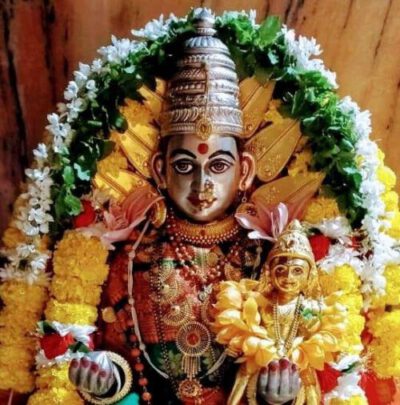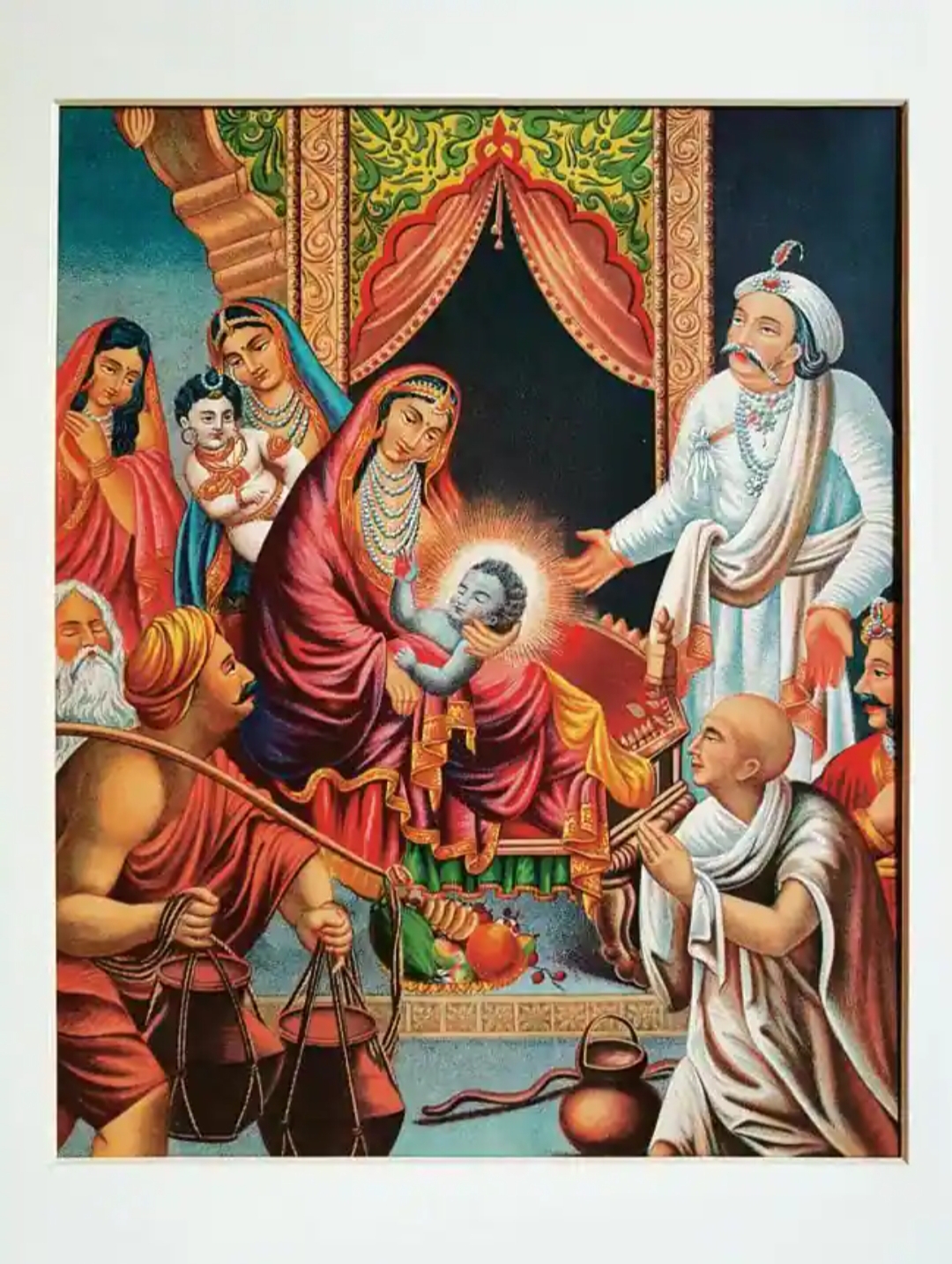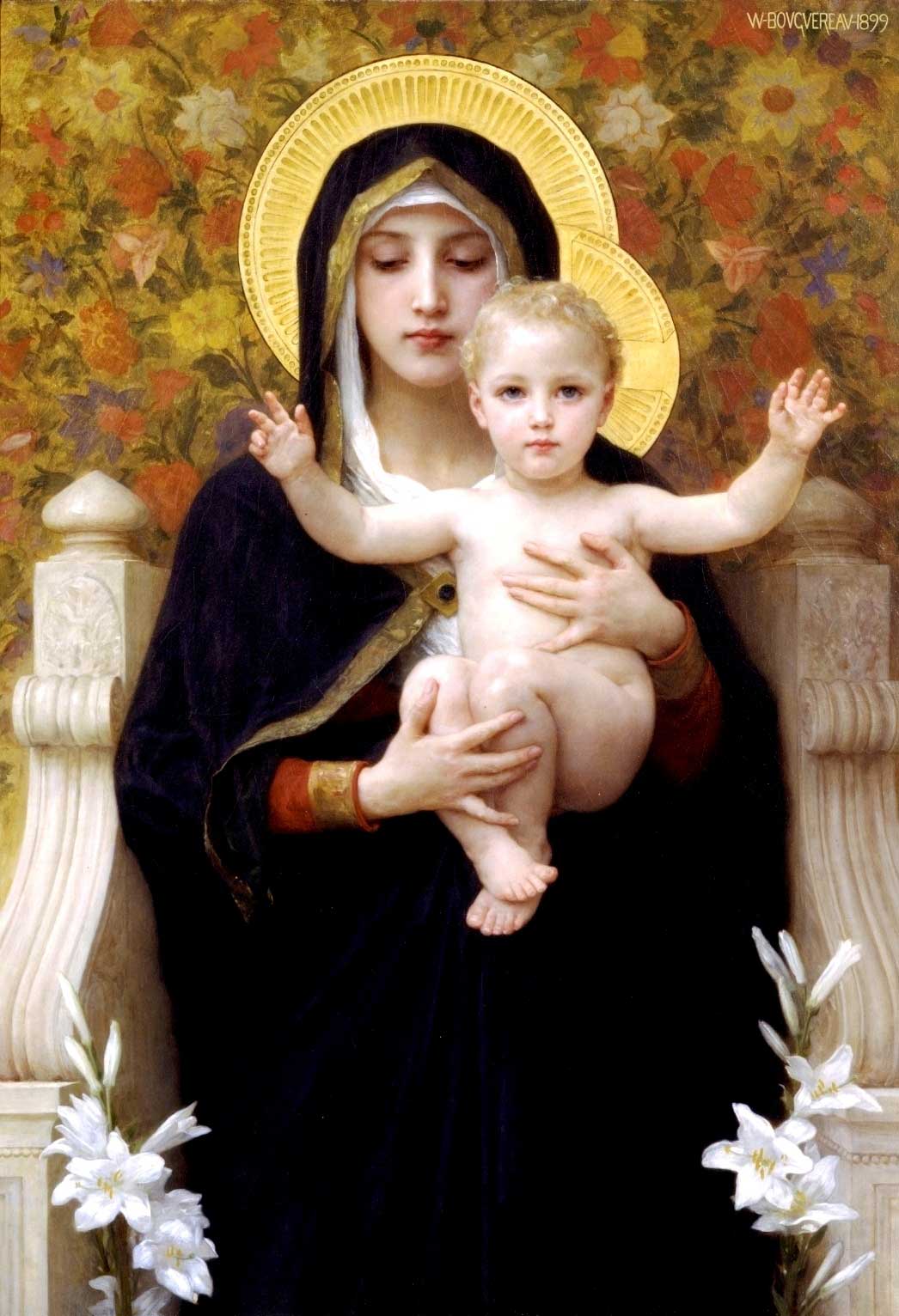Article Written By EIH Researcher And Writer
Aadrit Banerjee
There might be differences in what devout worshippers believe, bloodied histories of crusades and wars fought among them, or blind lines of divisions be drawn by orthodox priests and bishops, but Krishna and Christ, sleeping peacefully on their mother’s lap, are the concrete manifestations of the archetype of the eternal child who “dwells in the mystery of ageless time, unobscured by the dust of history”. It is thus no wonder that in art history, specially that of the subcontinent, we find striking similarities between the images of these two babes cuddled warmly on the laps of Mary-Yashoda or Devaki. The connection is so strong, and the images evoke such tender feelings, that there exists even a temple in Goa, the Shree Devakikrishna Temple at Marcel, where seeing the idol of Krishna-Devaki, the Portuguese had not decimated the temple, for it had reminded them of Virgin Mary-Jesus.
An impressive idol of Devaki, carrying the infant lord on her waist, stands at the inner sanctum of the temple. The image is unusual because while there exists a plethora of temples in the country dedicated to Krishna, there is no image of Devaki. In his book ‘The Cultural History of Goa from 10,000 BC to 1352 AD’, historian Anant Dhume compares the idol with the image of Madonna and the Christ child, tracing the similarities.
In the book, Dhume elaborates: “However, the idol of Devkikrishna originally of Chodan Island, Tiswadi taluka transferred at the time of molestation by the Christian missionaries to Mashela (Marcela in Portuguese) hamlet of Orgaon village, Ponda taluka, is interesting … History says that Vasco da Gama in his old age was appointed Vice-Roy of all colonies of the Far East as a gesture of honour. One day, he visited Chodan Island. When he saw this idol through the main doorway, he immediately saluted the image and went on his knees, considering it the image of Mother Mary, with baby Jesus …”
Similarly, the Indo-Portuguese ivory statuettes created in Goa and Sri Lanka, during the Portuguese reign which began in 16th Century, reflect such similarities. The Portuguese had settled with the aim to dominate the spice trade and spread their Christian faith, and these small, portable ivory statues would embellish the church altars and Goan homes, and were also transported abroad serving to fulfil their later project. These figurines were carved by the Indian artists under the guidance of the Jesuits. Art historian Gauvin Alexander Bailey notes that the Jesuit art commissions “were . . . a partnership in which the artists’ own interpretations of sacred art were encouraged and fostered.” While the Jesuits sourced small paintings, prints and sculptures from Europe for the Indian sculptors to use as reference, the indigenous artists drew from their own traditions for fashioning such figures. One of the most brilliant example of this syncretic form is the figure called the Good Shepherd Rockery (also known as the Good Shepherd Mount or Bom Pastor) which “displays the coming together of cultures in both its iconography and its features, encapsulating how Goan sculptors created images of the divine that are Catholic, European, and South Asian”. The child form of Christ in this figure, with round face and smooth skin were perhaps drawn from sculptures of baby Krishna like “Krishna, The Butter Thief, India, Tamil Nadu, 16th century” (LACMA).
Far from Goa, in Bengal, the Chore Bagan Art Studio, besides the Kansaripara Art Studio and the Calcutta Art Studio, produced homegrown prints around the second-half of the nineteenth century. For these artists, the various depictions of Christ in the European prints which had infiltrated the market by then, influenced their renderings of Hindu mythological themes. And perhaps the closest connection they could draw was between the child Christ and Krishna. Jyotindra Jain comments: “… the Chore Bagan Art Studio published a popular picture, titled Birth Of Krishna, which was almost entirely based on popular prints of The Birth Of Jesus Christ, to the extent that the presence of three wise men of the East was also literally imitated in this work.”
Artists such as Jamini Roy would also adopt this image, and Jesus and Mary would feature in the canvases of Tyeb Mehta, Krishnen Khanna, Madhvi Parekh and others in ways that provide a commentary on, and glimpse of the Indian social scene. Churches in India would similarly house idols of Mary clad in a traditional saree such as in Tamil Nadu’s Sanctuary of Our Lady of Vailankanni which was deemed a basilica by the Roman Catholic Church in 1962. These remain examples of how in art and in faith traditions merge, so do symbols and images, giving birth to syncretic cultures that testify the ravages of communal hate, man-made differences and orthodox interpretations. Extending this imagery of the mother and the child, Nirendranath Chakraborty, one of the finest modern poets of Bengal wrote:
Resting my chin on a state bus window
I see the sky, and I see you.
Child of a beggar mother,
Jesus of Calcutta.
The ever appeal of the mother-child, of motherhood and the unconditional bond of love and warmth that this relationship holds, that the Christ child on Madonna’s lap signifies and is reverberated in the image of Krishna-Yashoda or Devaki, is perhaps what marks the culture of love, and accounts for the several interpretations of this theme on diverse media found across the subcontinent.
References:
- Malkarnekar, Gauree. “When Devaki met her son”. Times of India, 29 Oct. 2017, https://m.timesofindia.com/city/goa/when-devaki-met-her-son/amp_articleshow/61317788.cms.
- Bhuyan, Avantika. “The Indian Pieta”. Livemint, 23 Dec. 2019, https://www.livemint.com/mint-lounge/features/the-indian-pieta/amp-11576849687469.html.
- Dhume, Anant Ramkrishna Sinai. The Cultural History of Goa from 10000 B.C.-1352 A.D, Broadway Publishing, 1 Jan. 2010.
- Tagore, Rabindranath. “The child ever dwells”. Tagorweb, https://www.tagoreweb.in/Verses/fireflies-200/the-child-ever-dwells-7654, Accessed 13 Dec. 2022.
- Chakraborty, Nirendranath. “Jesus of Calcutta”. Translated by Bappa Datta. Bappadatta, https://bappadatta.wordpress.com/2017/03/11/jesus-of-calcutta/, Accessed 13 Dec. 2022.
- Olson, Marsha G. “Mary on the moon: Ivory statuettes of the Virgin Mary from Goa and Sri Lanka Marsha G. Olson”. Rethinking Place in South Asian and Islamic Art, 1500–Present, edited by Deborah S. Hutton and Rebecca M. Brown, Routledge, 2017.
- Olson, Marsha G. “Christian art in India: Indo-Portuguese ivory statuettes”. Khan Academy, https://www.khanacademy.org/humanities/art-asia/south-asia/x97ec695a:1500-1850-deccan-south/a/christian-art-in-india-indo-portuguese-ivory-statuettes, Accessed 13 Dec. 2022.
- Bailey, Gauvin Alexander. Between Renaissance and Baroque: Jesuit Art in Rome, 1565–1610, University of Toronto Press, 2003.

Detail of The Christ Child as Good Shepherd (Good Shepherd Rockery), Indo-Portuguese, ivory, seventeenth century, 17.4 × 6.8 × 5 cm, place of origin: India (Goa) (The Walters Art Museum)

Shree Devakikrishna Idol
At the Shree Devakikrishna Temple, Marcel.
https://shreedevkikrishna.info/gallery/

The Birth of Krishna.
Print by the Chore Bagan Art Studio. https://www.livemint.com/mint-lounge/features/the-indian-pieta/amp-11576849687469.html

Virgin of the Lilies, 1899, Bouguereau, WikiMedia Commons.
https://commons.m.wikimedia.org/wiki/File:La_Vierge_au_lys.jpg#mw-jump-to-license

















